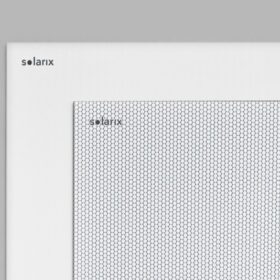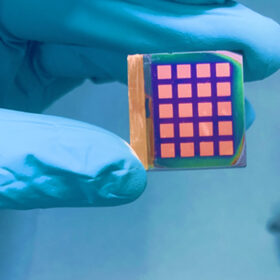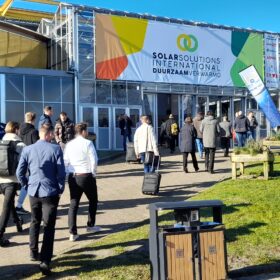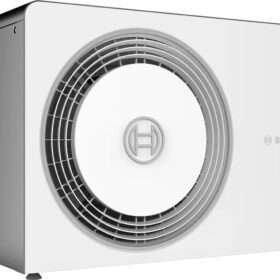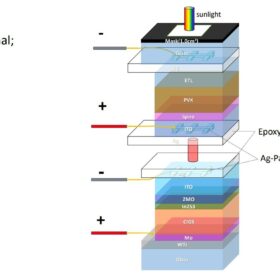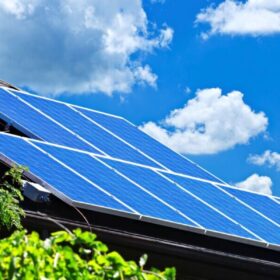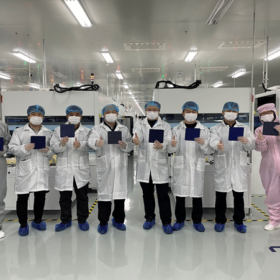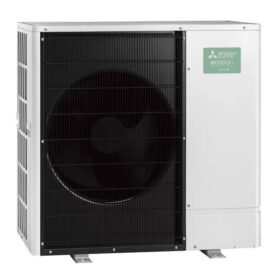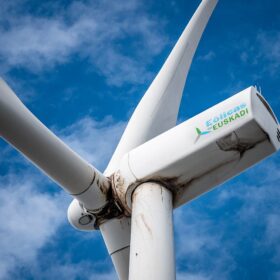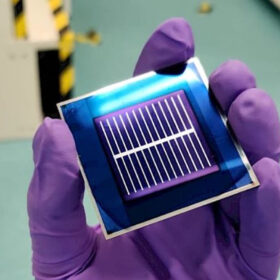Dutch BIPV specialist unveils white facade solar panels
Solarix, a building-integrated PV (BIPV) manufacturer in the Netherlands, has developed a white variant of its facade solar panels. It says demand for white BIPV products is rising across Europe, especially among architects.
Scientists achieve 24.83% efficiency with 2D/3D heterojunction perovskite PV cell
Researchers in China have built a perovskite solar cell with a 2D/3D heterojunction architecture. The device has an open-circuit voltage of 1.19 V, a short-circuit current of 25.21 mA cm−2, and a fill factor of 82.61%.
Key takeaways from Solar Solutions
The latest edition of Solar Solutions, the largest solar trade show in the Netherlands, showed that the Dutch PV market is set to stabilize in terms of volumes, while preparing to integrate more heat pumps and storage. The solar sector is asking to move away from net metering to create a more resilient distributed-generation PV market.
Bosch unveils propane heat pump for residential applications
Germany’s Bosch has developed an air-source heat pump that uses propane (R290) as the refrigerant. It can produce between 3.9 kW and 6.7 kW of heat, and domestic hot water to a temperature of up to 75 C. It says the heat pump can be paired with rooftop solar to maximize self-consumption.
Midsummer develops 24.9% efficient 4T tandem perovskite-CIGS solar cell
Midsummer and researchers from the University of California, Los Angeles (UCLA), say that their new tandem PV cell is suitable for the company’s Duo production equipment, which makes 56 mm x 156 mm CIGS cells on a flexible stainless steel substrate.
Common misconceptions about residential PV
More and more people want to invest in PV arrays and battery storage systems. However, there are a number of myths that could lead to disappointment among customers, according to one German consumer association.
Huasun begins mass production of 25% efficiency bifacial heterojunction solar cells
Huasun has switched on the manufacturing lines for its new heterojunction module factory in China’s Anhui province.
Mitsubishi unveils propane heat pump for residential applications
Mitsubishi Electric has developed an air-source heat pump that uses propane (R290) as the refrigerant. It can produce between 5 kW and 8.5 kW of heat and domestic hot water to a temperature of up to 75 C.
Solar mounting structure made of recycled wind turbine blades
Spain’s Acciona Energia is using fiberglass from the blades of used wind turbines to make the torsion beams of solar trackers. It is using the tech as part of a pilot project in Badajoz, Spain.
CEA-INES, Enel achieve 26.5% efficiency for tandem perovskite-silicon solar cell
CEA-INES researchers and Enel have developed a new solar cell with an active area of 9 cm² and an open-circuit voltage above 1,880 mV. Their results improve on the 25.8% efficiency they achieved for the same kind of cell in December 2022.
